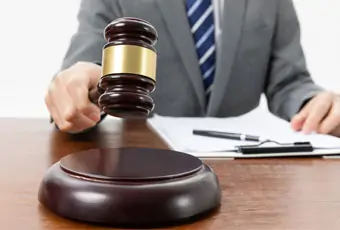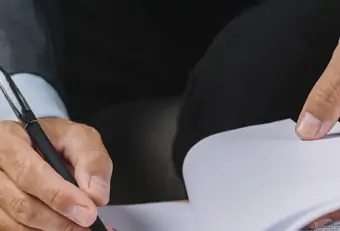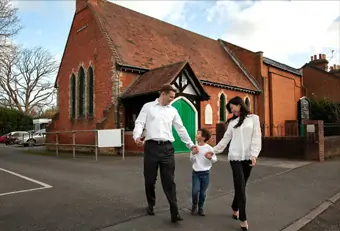A Background to South Carolina Eminent Domain
Eminent domain is the power of the government to take private property and convert it into public use through a process known as condemnation.
Federal Law
The power of eminent domain exists as an inherent governmental power. The power of eminent domain is not contingent on a particular legislative or constitutional “trigger” in that it ”appertains to every independent government. It requires no constitutional recognition; it is an attribute of sovereignty.” Boom Co. v. Patterson, 98 U.S. 403, 25 L. Ed. 206, 25 L. Ed. 2d 206 (1879).
South Carolina Law
Constitutional and Statutory Limitations on Eminent Domain Power
Federal Law Limitations
Both federal and South Carolina law limit the exercise of eminent domain power.
Federal Law Limitations
The Fifth Amendment of the U.S. Constitution provides the primary limitation on eminent domain power. The Fifth Amendment provides in part “nor shall private property be taken for public use, without just compensation” The Fourteenth Amendment made the Fifth Amendment’s limitation on uncompensated taking applicable to state and local governments.
South Carolina Limitations
Article I, Section 13 of the South Carolina Constitution provides limitations on the exercise of eminent domain power. Article I, Section 13 states:
Except as otherwise provided in this Constitution, private property shall not be taken for private use without the consent of the owner, nor for public use without just compensation being first made, therefore.
Types of Condemnation
There are two basic types of condemnation, direct condemnation and inverse condemnation.
Direct Condemnation
In a direct condemnation proceeding, a government entity moves to condemn property, questions of proper public use and just compensation due to the property owner are then considered.
Inverse Condemnation
Inverse condemnation involves some government action that deprives a property owner use of his property. “In inverse condemnation cases, the property owner is the moving party claiming an act of the sovereign has damaged his property to the extent of an actual taking entitling him to compensation.” Cobb v. S.C. Dep’t of Transp., 365 S.C. 360, 365, 618 S.E.2d 299, 301 (2005).
“South Carolina courts have embraced federal takings jurisprudence as providing the rubric under which we analyze whether an interference with someone’s property interests amounts to a constitutional taking.” Hardin v. South Carolina Dept. of Transp., 371 S.C. 598, 641 S.E.2d 437, 443 n. 4 (2007).
Permanent Physical Occupation
Permanent physical occupations involve some government activity that interferes with the use of property. Even minor interferences will qualify as a taking. Loretto v. Teleprompter Manhattan CATV Corp, 458 U.S. 419, 427 (1982). Further, indirect entry to property caused by a government entity such as flooding may justify compensation. Columbia Venture, LLC v. Richland County, Opinion No. 27563 (S.C. Aug. 12, 2015).
Regulatory Takings
South Carolina courts have held that certain government regulations of land can be tantamount in its effect on the direct physical invasion of land by the government. “government regulation of private property may, in some instances, be so onerous that its effect is tantamount to a direct appropriation or ouster.” Dunes W. Golf Club, LLC v. Town of Mount Pleasant, 401 S.C. 280 (2013) See also Lucas v. South Carolina Coastal Council, 505 U.S. 1003, 605 S.Ct. 2886, 120 L.Ed.2d 798 (1992).
Categorical (Per Se) Regulatory Takings
Government regulation creates a per se taking in two scenarios:
- Where an owner is required to suffer a permanent physical invasion of property, however, minor. Lucas v. South Carolina Coastal Council, 505 U.S. 1003, 605 S.Ct. 2886, 120 L.Ed.2d 798 (1992)
- Where a regulation denies all economically beneficial or productive use of land. Loretto v. Teleprompter Manhattan CATV Corp., 458 U.S. 419, 436-37, 102 S.Ct. 3164, 73 L.Ed.2d 868 (1982)
Partial Takings
Partial takings involve circumstances where the application of a regulation to particular property is considered a taking that affects less than the property as a whole. To determine whether there is a taking under this category, apply the three Penn Central Transportation Co. v. City of New York, 438 U.S. 104, 57 L.Ed.2d 631 (1978), factors, which require an examination of the following:
- the character of the invasion,
- the economic impact of the regulation as applied to the particular property,
- the property owner’s distinct investment-backed expectations regarding property.
Parcel as a Whole Rule
South Carolina courts apply what is known as the “parcel as a whole” rule, which states in a regulatory takings analysis the court must consider the regulation’s effect on owner’s interest in entire tract, not just portion affected by regulation. Byrd v. City of Hartsville, 620 S.E.2d 76, 365 S.C. 650 (2005).
Land-use Exactions
A land-use exaction involves compensation that a development is required to pay to the government before starting construction or putting land to a new use. To be valid, an exaction must satisfy two conditions:
- There must be an essential nexus between the exaction itself and the state interest that the exaction is advancing. Nollan v. California Coastal Comm’n, 483 U.S. 825, 107 S. Ct. 3141, 97 L. Ed. 2d 677 (1987).
- There must be a “rough proportionality”- the exaction must be related in both nature and extent to the impact of the proposed development. Dolan v. City of Tigard, 512 U.S. 374, 391 (2005). See also Sea Cabins v. City of North Myrtle Beach, 548 S.E.2d 595, 345 S.C. 418 (2001).
Partial Takings
Partial involve circumstances where a regulation’s effect on a particular property does not deny all economically beneficial or productive use. South Carolina Courts apply the three Penn Central Transportation Co. v. City of New York, 438 U.S. 104, 57 L.Ed.2d 631 (1978), factors to determine if a taking has occurred:
- the character of the invasion,
- the economic impact of the regulation as applied to the particular property,
- the property owner’s distinct investment-backed expectations regarding the property.
See also Dunes W. Golf Club, LLC v. Town of Mount Pleasant, 401 S.C. 280 (2013)
Evidence in Condemnation Cases
Evidence that can be introduced in condemnation actions and inspections of property are specified in Section 28-2-340 of The Eminent Domain Procedure Act. The Act states that the following evidence may be admitted:
- Evidence that a building or improvement is unsafe, unsanitary, or a public nuisance or is in a state of disrepair and evidence of the cost to correct the condition, even if no action has been taken by local authorities to remedy the condition;
- Evidence that any state public body charged with the duty of abating or requiring the correction of nuisances or like conditions or demolishing unsafe or unsanitary structures issued an order directing the abatement or correction of any conditions existing with respect to the building or improvement or demolition of the building or improvement and of the cost of compliance with an order;
- Evidence of the last assessed valuation of the property for purposes of taxation and of any affidavits or tax returns made by the owner in connection with the assessment which states the value of the property and any income tax returns of the owner showing sums deducted because of obsolescence or depreciation of the property;
- Evidence that the property or improvement is being used for illegal purposes or is being so overcrowded as to be dangerous or injurious to the health, safety, morals, or welfare of the occupants and the extent to which the rentals therefrom are enhanced because of the use;
- Evidence of the price and other terms upon any sale or the rent reserved and other terms of any lease or tenancy relating to the property or to any similar property in the vicinity when the sale or leasing occurred or the tenancy existed within a reasonable time of the hearing.
Public Uses Compared to Nonpublic Uses in Condemnation Actions
What constitutes Public Use?
Federal and South Carolina courts maintain that a condemned property must confer a public benefit, not necessarily use by the public. To be sufficient to authorize a taking within the meaning of the “public use” requirement contained in the Fifth Amendment. Berman v. Parker, 348 U.S. 26 (1954). South Carolina courts have avoided offering a rigid definition of public use rather opting for a contextual definition in which “The term is an elastic one to keep abreast of changing social conditions, and presents a question of fact in each particular case.” Karesh v. CITY COUN. OF CITY OF CHARLESTON, 247 S.E.2d 342, 271 S.C. 339 (1978).
However, the court has stated that Tuomey Hospital v. City of Sumter et al., 243 S.C. 544, 551, 134 S.E. (2d) 744, 747 (1964), “Mere benefit to the public or permission by the owner for use of the property by the public are not enough to constitute a public use, but it must appear that the public has an enforceable right to a definite and fixed use of the property.”
Public Use and Economic Development
South Carolina, voters approved a constitutional amendment in 2006 that forbids taking property for economic development in response to the decision in Kelo v. New London, 545 U.S. 469, 125 S. Ct. 2655, 162 L. Ed. 2d 439 (2005) whereby the United States Supreme Court allowed the condemnation and transfer of land to a private corporation for economic development purposes. The South Carolina law narrowed the definition of public use to exclude seizing blighted properties for economic development purposes unless it presents a clear danger to health and safety.
Challenging Condemnation Actions
The Eminent Domain Procedure Act governs how property owners challenge condemnation actions. The provisions of this chapter shall constitute the exclusive procedure whereby condemnation may be undertaken. Godwin v. Carrigan, 227 S.C. 216, 225, 87 S.E.2d 471, 475 (1955)
It is important to note that under the Act the issues concerning just compensation and the right to condemn are considered in separate proceedings.
Separate Proceedings
S.C. Code Ann., § 28-2-470 states “An action challenging a condemnor’s right to condemn must be commenced in separate proceedings filed in the court of common pleas in the county in which the property or a portion thereof is located.”
Timing
S.C. Code Ann., § 28-2-470 states a Challenge Action must be commenced within 30 days of the service of the condemnation notice. If not filed in in a timely manner
Challenge Action Separate from Trial on Just Compensation
S.C. Code Ann., § 28-2-470 states that the trial of the Challenge Action is separate from the trial on the issue on just compensation.
Grounds to Challenge Just Compensation
A Challenge Action must be predicated on deficiencies in the condemnation process. These deficiencies are condemnor’s 1) bad faith; 2) fraud; or, 3) clear abuse of discretion.
A landowner challenging a condemnation proceeding has the burden of proof to establish that the condemning authority is acting fraudulently, in bad faith, or is clearly abusing its discretion. Sease v. City of Spartanburg, 242 S.C. 520, 131 S.E.2d 683 (1963).
Challenge for Lack of Public Use
Further, a landowner may challenge the whether a particular condemning authority will be legitimately placing the condemned property to public use. The questions presented under this scenario would center on the amount of public benefit derived from the condemned property or allegations that the benefits from a condemned property are improperly directed to a private beneficiary.
Challenges for Necessity
Some Challenge Actions allege that the condemnation is not reasonably necessary to accomplish the purpose of the project. This type of challenge often overlaps with abuse of discretion claims in that the acquisition condemned property exceeds what are necessary for the purpose of the project. Atkinson v. Carolina Power & Light Co., 239 S.C. 150, 121 S.E.2d 743 (1961):
Recovery of Costs and Fees
According to S.C. Code Ann., § 28-2-510 (A) a landowner prevailing in a Challenge Action is entitled to recover reasonable attorney’s fees and litigation costs. “If, in the action challenging the condemnor’s right to take, the court determines that the condemnor has no right to take all or part of any landowner’s property, the landowner’s reasonable costs and litigation expenses incurred therein must be awarded to the landowner.”
Improper Challenge Actions and Sanctions
A landowner should not file a Challenge Action to delay condemnation or for any improper purpose beyond a good faith dispute as to the process. Landowners who engage in frivolous conduct can be penalized under S.C. Code Ann., § 28-2-510 which states “If the court determines the right to take issue was not raised and litigated in good faith by the landowner, the court must award the condemnor the reasonable costs and litigation expenses incurred therein.”
Issues Related to Just Compensation
What Constitutes Just Compensation
Section 28-2-370 of The Eminent Domain Procedure Act offers the definition of just compensation: “Just compensation includes the value of the property to be taken, any diminution in the value of the landowner’s remaining property, and any benefits as provided in § 28-2-360 may be considered.”
The just compensation required by the Constitution to be paid to a landowner is premised on the actual loss caused to him by the condemnation of his land. He is entitled to receive the value of what he has been deprived of and no more. Smith v. City of Greenville, 229 S.C. 252, 92 S.E.2d 639 (1956).
As part of the just compensation calculation, the following factors may also alter the compensation a landowner is entitled; the factors are outlined below:
Benefits
A landowner may be entitled to benefits deriving from the proposed use of the condemned land. S.C. Code Ann. § 28-2-3 states “In any condemnation action, benefits to be derived from the proposed project including the value of any property or rights relinquished or reverting to the landowner as a part or result thereof, must be taken into consideration in determining the amount of compensation and due allowance made for them.”
Damages
A landowner may also be entitled to damages resulting from the devaluation of the remaining property in a partial taking. The devaluation may be the result of decreased market value of the property resulting from the taking. S.C. State Highway Department v. Touchberry, 248 S.C. 1, 148 S.E.2d 747 (1966).
Calculating Fair Compensation
In valuing property, South Carolina law requires an appraiser to consider the property’s highest and best use. “Highest and best use” has been defined as “the most favorable use to which the property may reasonably be put in the not too distant future.” SC STATE HWY. DEPT. v. Bryant, 171 S.E.2d 349, 253 S.C. 400 (1969).
The calculation of the highest and best use does not allow for consideration of speculative and remote uses rather the fair market value at the time of the taking should be considered. However, a property with high potential to appreciate may affect its fair market value this appreciation must be reasonably probable. South Carolina State Highway Department v. Westboro Weaving Co., 244 S.C. 516, 521, 137 S.E.2d 776, 779 (1964).






